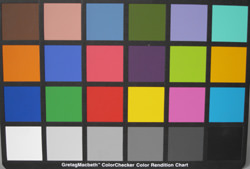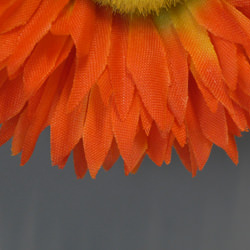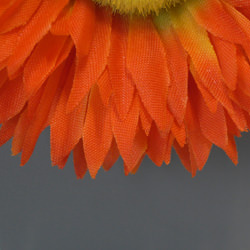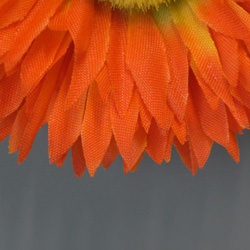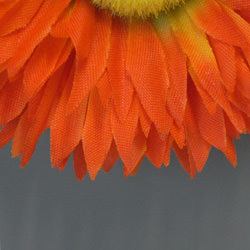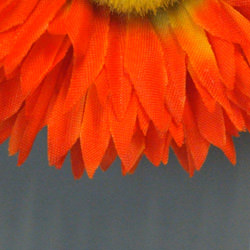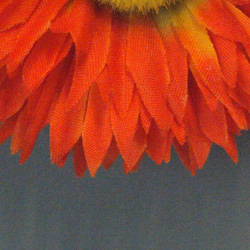Ricoh have always been one of those companies that should be taken more seriously than they are. The top end cameras they produce are good, the digital cameras have always had inspiring features and looking at the GX100, it doesn’t look like it will fail on this occasion.
 Ricoh Caplio GX100 Specification
Ricoh Caplio GX100 Specification
- Sensor: CCD – 10.3 Mp
- Image Size: 3648 x 2736 pixels
- Lens: 5.1-15.3mm (3x Optical Zoom)
- Focus: Auto, Manual, Snap, Infinity
- Metering : Multi, Centre, Spot
- Monitor: 2.5in. TFT LCD
- Movie Mode: Yes
- Storage: SD(HC)/MMC, 26Mb Internal
- Batteries: DB-60 Li-Ion, 2 x AAA
- AC Adaptor: Optional
- Video Output: Yes
- Size/Weight: 112x58x25mm, 220g
- Transfer: USB
The GX100 is at the top end of the market with the body setting you back £349 or you can opt for the pack which includes the removable LCD viewfinder at £399. Competitors are few and far between. Panasonic have the FX100 with 12Mp, 3x optical zoom and Leica lens for £289 whilst imaging giants Leica have the D-Lux 3 at £490 which will give you 10Mp, a 4x optical zoom and the swollen head that comes with owning one.
 Ricoh Caplio GX100 Modes and features
Ricoh Caplio GX100 Modes and features
Upon opening the box of the GX100, I was amused to discover a camera that looked like it had been designed by someone using Sticklebricks. However, that amusement was short lived as the camera grows on you like fungus on an old tree.
The top of the camera shows the Power button, Mode dial which has Auto, Program, Aperture Priority, Manual, Scene mode, Video, and two favourites. Noticeably, there is a lack of Shutter priority. The Flash switch enables the flash to pop up and be used and when down, the flash functions cannot be accessed, so Auto flash does not pop the flash up for you. The Function button lets you choose a setting to have at your fingertip. These are Manual Focus, Auto exposure lock, Exposure compensation , White balance, ISO , Quality rating, Focus, Image set which is a picture quality setting for sharpness, colour depth and contrast, AE meter, Continuous mode for continuous shooting, Auto Bracketing and Sound. There is also the obligatory Shutter release button and a selector dial which is normally found on Digital SLR’s and can be used for scrolling through the menu or setting the aperture value in Aperture priority.
 Manual mode allows the Shutter speed and Aperture to be changed and to do this, the selector dial changes the aperture, whilst the Adjustment switch amends the shutter speed. The viewfinder will adjust the exposure to let you know when it is bright enough which is a nice touch and there is also a meter on the screen to use. The Scene button allows the Mode button to come into play and this is used to choose the Mode desired between Portrait, Sports, Landscape, Perspective correction, Text, Zoom macro which uses the digital zoom so expect loss of quality and High sensitivity for low light shooting. To set the My1 and My2 settings (favourites), the set up screen on the menu has to be accessed.
Manual mode allows the Shutter speed and Aperture to be changed and to do this, the selector dial changes the aperture, whilst the Adjustment switch amends the shutter speed. The viewfinder will adjust the exposure to let you know when it is bright enough which is a nice touch and there is also a meter on the screen to use. The Scene button allows the Mode button to come into play and this is used to choose the Mode desired between Portrait, Sports, Landscape, Perspective correction, Text, Zoom macro which uses the digital zoom so expect loss of quality and High sensitivity for low light shooting. To set the My1 and My2 settings (favourites), the set up screen on the menu has to be accessed.
The back of the camera has a VF/LCD button for switching between the screen and viewfinder if you buy it. The Adjustment rocker allows the shutter speed to be altered in Manual and scrolling left and right through the menu to work with the selector dial.
One thing I don’t like is the zoom button. It is too small and doesn’t feel well made. The Menu has three pages to picture taking which gives options like Picture quality which is an impressive 10Mp and even more impressive is the possibility of shooting in RAW, focusing, metering, Bracketing, ISO setting and Image stabiliser to name a few. There are also another six pages to the set up. These are relatively advanced features to be included on the auto mode, however the same functions are available in Manual mode, so it seems that Ricoh have decided that we are grown up enough to make our own choices about whether we want to use these functions. Saying that, though, the camera is advanced enough to be used by the type of people that are fluent in these options to make a concious decision about using them. Other options on the reverse of the camera are the Display button which will scroll through Info on screen, Histogram, rule of thirds and no info, Flash options, Macro , Quick review which will only review the previous picture taken and Mode. These buttons double up as a secondary navigation to the menu and the Mode button can only be used to select modes in the Scene mode on the Mode dial.
 The front of the camera bears a button which allows the lens ring to be removed and lens attachments fitted which is nothing new but adds to the overall features available.
The front of the camera bears a button which allows the lens ring to be removed and lens attachments fitted which is nothing new but adds to the overall features available.
Ricoh Caplio GX100 Build and handling
The camera feels strong and solid as you’d expect from Ricoh at the price it is. The camera is metal with a rubber grip on the front for fingers and the back for thumb.
The lens is a 24mm wide angle lens which is unique in a digital compact at this time and gives an outstanding field of view. Given this excellent feature, Ricoh have only put a 3x optical zoom on which i assume is done purposefully. I think Ricoh know who this camera is for and that sort of consumer won’t be flattered by huge zooms as they do have the technology available to stick a large zoom in the camera. I think a massive zoom would have also brought the prestige feel of the camera down to a more commercial level. That being said, they could have put maybe 4x optical in and still held their edge.
Macro mode enables the camera to get down to a staggering 1cm which is great for businesses that have a small product or if you have an interest in insect photography.
The card and battery are housed together in the bottom of the camera and both are snared in to prevent falling out but the battery door has a lock which is not spring loaded and has to be clicked over intentionally. The battery is Lithium Ion for maximum usage but in a bizarre twist, Ricoh have fitted the battery bay with AAA capability which is a good idea and AAA was obviously chosen over AA because of size issues.
Ricoh Caplio GX100 Flash options
The Flash is only available once it has been opened and the Flash mode button will give options of Auto, Red-eye reduction, Flash on, Slow flash synch, Soft flash and Flash off which is a waste of a feature as you can just push the flash back down. The power rating is approx. 0.2 – 5.0 m at wide angle and 0.15 – 3.0 m at telephoto which is a good performance. This can be enhanced by fitting the hotshoe with an external flash.
Ricoh Caplio GX100 Performance
The GX100 can start up in about 1.5sec. Which is nothing to shake a stick at and the burst mode managed an astonishing 16 images in the 10sec test not including download time. It starts off on a high speed burst then slows down to just under 1fps after the first two shots.
Portrait mode warms the picture up a little too much judging by our test and the colour chart saturated the blues and warmer colours whilst more earthy pastel colours were more bland. The Macro mode stood up to its claim of 1cm close focusing which is only in the wide-angle. This does have the drawback of the shadow from the camera getting in the picture. The lock gave good results on an overcast day with a balanced image in low and high key areas, no noise in shadows indicates a low ISO rating thanks to the bright lens and what little sky we got that day has come out a nice colour.
|
Warm and cool colours are saturated. |
|
Ricoh Caplio GX100 Noise test
The noise test gave out standard results in the lower ISO stages with ISO80 and ISO100 showing little or no noise. Sadly, the noise does start to show at ISO200 and ISO400, but doesn’t get really bad until ISO1600, but that doesn’t mean that it isn’t bad at ISO800 and the colour of the petals really flourished, but then dropped off again.
Ricoh Caplio GX100 Verdict
The GX100 is a great camera and more suited to someone with a small business or a keen amateur who needs a wide angle compact with the features of an SLR. The picture quality is good and the build quality is superb. I don’t like the viewfinder being an optional accessory and their are other viewfinders available that will work on the GX100 so why not let the owner use a genuine Ricoh part as standard? I think it is down to money.
It is trying to rub shoulders with the top brass and specification wise it is up there although I cannot understand the lack of shutter priority or the small zoom. If they had fit a 4x optical to it, it would be nearer the spec of the D-Lux 3. The GX100 will suit those who can’t quite stretch to a Leica as it gives good specification and will also be good for those of you who don’t care what a camera looks like.
Ricoh Caplio GX100 Plus points![]() Wide angle lens
Wide angle lens![]() 1cm Macro
1cm Macro![]() SLR features
SLR features
Ricoh Caplio GX100 Minus points![]() Viewfinder is an optional extra
Viewfinder is an optional extra![]() Exhaustive menu list
Exhaustive menu list![]() Only a 3x optical zoom
Only a 3x optical zoom
FEATURES![]()
HANDLING![]()
PERFORMANCE![]()
OVERALL![]()
The Ricoh Caplio GX100 costs from £294 and is available from Warehouse Express:
